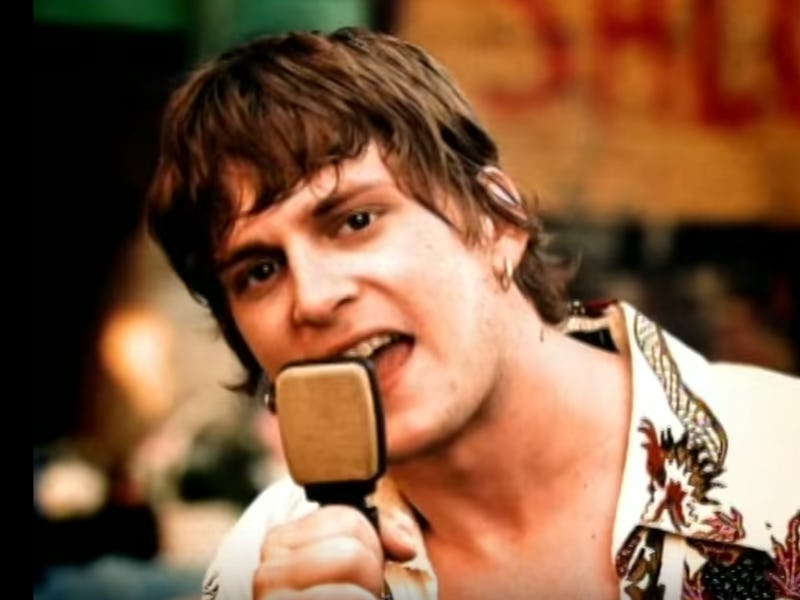Holographic Rob Thomas Is Making VR Much Less Antisocial
Hologram karaoke with the "Smooth" star is the first step toward society-friendly VR.

Man, it’s a hot one!
This summer, Rob Thomas, who led us to sonic transcendence with “Smooth” in 1999, is touring not only with Counting Crows but — get this — with his very own hologram. That’s right: Lucky fans nostalgic enough to buy a VIP ticket aren’t just getting one Rob Thomas but two.
But wait, you ask, why do we need Rob Thomas’s hologram when Rob Thomas is still alive? Because that Rob Thomas hologram is going to sing karaoke with our hologram selves, that’s why!
Um, what?
Let’s take a step back: This bizarre-but-altogether-not-unwelcome scenario is a taste of what virtual reality would look like if it weren’t so antisocial. While VR has proven itself to be more than capable of enhancing our experience of everyday living, it isn’t exactly conducive to public life. VR headsets may be portals to strange new worlds but (partially by nature) can be also incredibly isolating. They are fine platforms for engaging in, say, role-player games or virtual porn — activities that are, for the most part, best enjoyed alone. But not all enhanced experiences are meant to be solitary.
Karaoke — especially karaoke with Rob motherfucking Thomas! — is one that’s meant to be shared in real time, with real people. If you’re singing alongside Rob Thomas, you want people to see. Sure, you could probably strap on an Oculus Rift and immerse yourself into a virtual recreation of Carlos Santana’s “An Evening Supernatural” tour, belting alongside Rob Thomas on stage from the comfort of your home. But if nobody else is there to see it, the sad reality is that you’re a solitary chump singing a virtual duet with Rob Thomas who knows all the words to Billboard’s number two song of all time.
So the new thinking is that maybe VR is best when it’s shared. VNTANA, the company that created the Matchbox 20 star’s hologram for his tour, has banked its entire future on this idea, creating VR platforms — largely holograms, for now — that allow VR to be enjoyed in public.
“We consider it ‘social augmented reality’ when we can put the digital into the real world without wearables,” Ashley Crowder, the company’s CEO, told Inverse. She concedes that headsets and hololens have their uses, “but in a public space,” she says, “that doesn’t quite make sense.”
This concept may seem simple but is actually an underexplored idea in the VR world. The underlying assumption in VR has been that users not only want to enhance their experience of the world but also have accepted that they’ll have to avoid people to do so. But picture a VR event in which only one person within the group straps on a headset and plugs in. What is everyone else doing? They’re looking on awkwardly, because headsets don’t present a common ground for virtual reality and actual reality to intermingle.
VNTANA’s unfortunately named “Hollagrams,” (which include holographic Rob Thomas and previous artists like Paul Oakenfold and Nicky Romero; Crowder hopes to recruit Beyoncé someday), creates this interface, allowing your friends to watch you experience VR. If you’re a VIP guest at the Rob Thomas tour this year, you can create a holographic avatar of yourself, which is then projected onto a small — and, crucially, public — stage with your holographic artist of choice. As you sing IRL, your hologram sings in parallel — next to holographic Rob Thomas! — for all of your friends to see. According to Crowder, holo-Rob is even programmed to interact with holo-you.
At the end of the performance, Rob Thomas turns to your hologram with a reminder: “That was awesome. But remember: It didn’t really happen until you share it with your friends.” His pronouncement, though unabashedly promotional, carries with it a kernel of truth; virtual reality, shared with friends, is, indeed, more real. With a new step in your groove, you go forth and share a video of the experience online, further blurring the line between your virtual and actual life.
Okay, so VNTANA’s technology remains a bit hokey, but the ideas behind it are worth probing. Much has been said about the dangers of VR-induced isolation and how it’s shaping an increasingly insular generation for the worse, but, as socially augmented reality plays to the human desire for interaction, it might represent a much healthier way to toy with reality. In any case, it forces us to ask why we seem to derive more satisfaction from seeing avatars of ourselves interact with other avatars than from interactions that actually take place in real life.
If you ask Crowder, she’ll tell you that socially augmented reality and VR alike are ways of elevating the human experience into something that’s simply more fun. “I think it becomes more of a game,” she says. “And when it becomes interactive, that’s when people are like, wow. It’s one thing to see a hologram in front of you, but if you say hello and that hologram says hello back, then you start to really say, ‘What is reality, and what’s not?’”
Virtual reality is society’s response to the sentiment that — as Rob Thomas so aptly put it — this life ain’t good enough. Socially augmented reality is our way to make it real. There’s no forgetting about it, though — VR, no matter how social we choose to make it, is here to stay.